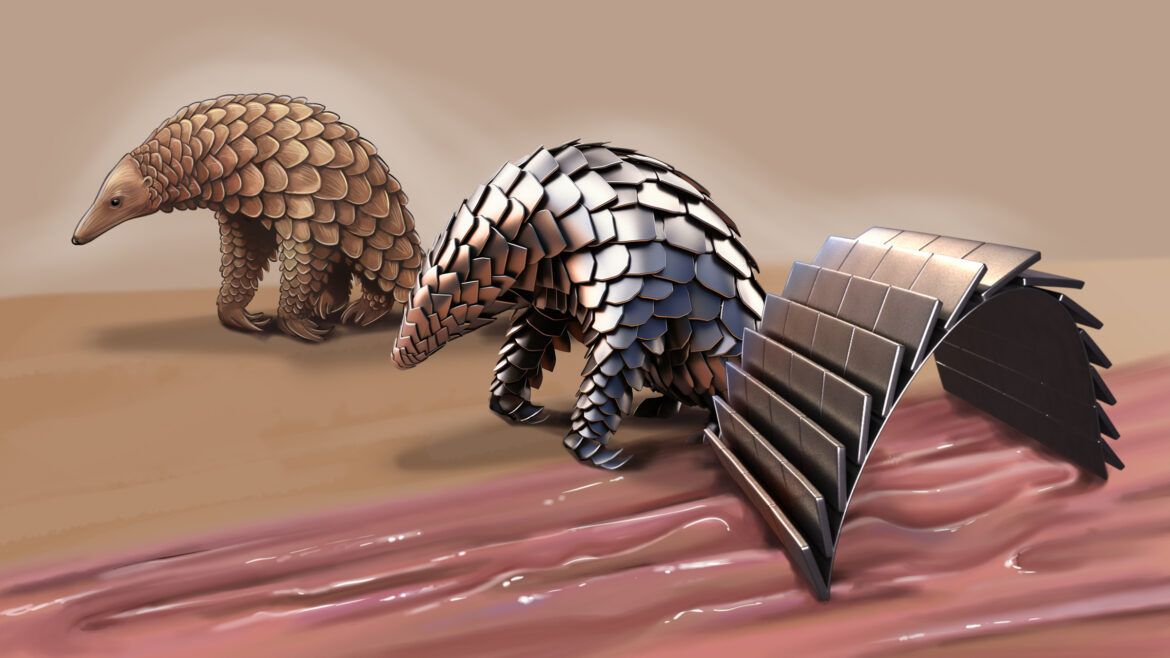Inspired by the unique ability of pangolins to quickly curl up into a ball, researchers from the Physical Intelligence Department at the Max Planck Institute for Intelligent Systems in Stuttgart have developed a robot that mimics this functionality. The research, published in Nature Communications on 20 June 2023, demonstrates the creation of a flexible robot that combines soft and hard components, capable of turning into a sphere and emitting heat when needed.
The team, led by Prof. Dr. Metin Sitti, crafted a robot that measures a mere two centimeters in length, comprising two main layers. One layer consists of a soft polymer dotted with tiny magnetic particles, while the other incorporates a series of overlapping metallic components, similar to the scales of a pangolin. The dual composition allows the robot to remain soft and flexible, despite its metallic elements, making it suitable for usage within the human body.
The researchers can control the movement of the robot by exposing it to low-frequency magnetic fields, enabling it to roll up and navigate freely without harming surrounding tissues. Similar to the pangolin’s defense mechanism, the metal components mimic the animal’s scales, providing a protective shell when it rolls up. This innovative design allows the robot to transport particles, potentially including medications, within the human body. The team envisions the possibility of such a machine traveling through the digestive system, revolutionizing drug delivery processes.
In addition to its navigational capabilities, the robot can also generate heat when subjected to high-frequency magnetic fields, reaching temperatures exceeding 70oC due to the embedded metal. The ability to emit heat is valuable in several medical procedures, such as treating thrombosis, halting bleeding, and eliminating tumor tissue. Devices capable of independent movement while retaining hard features and the ability to generate heat are rare, thus making the “pangolin” robot a potentially transformative tool in modern medicine.
The robot’s dual functionality offers promising potential in reaching the most sensitive and narrow regions of the body in a minimally invasive manner, thereby delivering targeted heat treatments as necessary.
Preliminary tests have successfully demonstrated the robot’s versatility as it navigates animal tissue and artificial organs under controlled conditions. However, it is stressed that the full implementation of this robotic technology within medical procedures remains a future vision.
By combining biomimicry and advanced robotics, the researchers hope that their work will pave the way for new techniques in medical treatments and drug delivery. They plan to continue refining the technology while exploring further potential applications in the healthcare sector.
Photo: Max Planck Institute for Intelligent Systems

